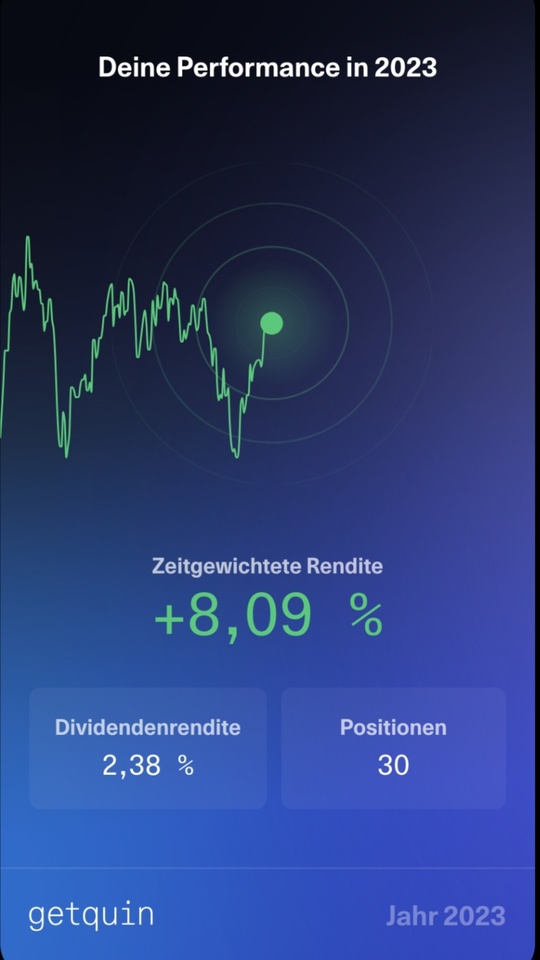That was my stock market year 2023.
Since I can call this year the first in which I was able to invest a large sum almost every month, my New Year's resolution is now to invest at least €1,000 every month. Thanks to a change of employer, I can now make this a reality.
I have now also looked beyond the German / European horizon and diversified my portfolio further this year. Non-equity stocks have also made it into my share portfolio. I would like to pick up on this again next year. Asian stocks are still missing here. Let's see what finds its way into my portfolio in 2024.
In addition, at least another €200 a month from my 'voluntary work' will flow into my portfolio. I would like to use this primarily to increase my position in cryptocurrencies $BTC (+1.11%) and $ETH (+0.58%) further expand.
My first share in 24 will actually be $SBUX (+0.28%) be. I had once said here on getquin that I would not invest. However, I changed my mind after I had a hot drink with my girlfriend in a Starbucks in Munich this year and used the time to observe who was actually getting an overpriced coffee here. I won't be getting any coffee here either, but I hope that others here will consume the black brew all the more.
On my hit list is $ORSTED (+0.36%) right at the top. After looking after a large solar project in the region this year, my view of renewable energies has changed a little, even if I think wind power will still do better than solar energy in Europe. I'll probably keep an eye on developments here until around April, but I might get out sooner.
Of course, the aim is still to achieve a return in order to make good provisions for the future. At the age of 25, I'm a bit proud to have saved a small sum. For most people, of course, this is a drop in the ocean, but we mustn't forget... Getquin is also a bubble somewhere (and I'm sure there are one or two fake portfolios here too).
As I now also enjoy the benefits of a company car with private use, I will sell my private car next year and reinvest the capital 'gained' from it in the stock market. This will add up to a nice little sum.
If you like, you can also take a look at my portfolio and give me some feedback. :)
I wish everyone a happy new year!







